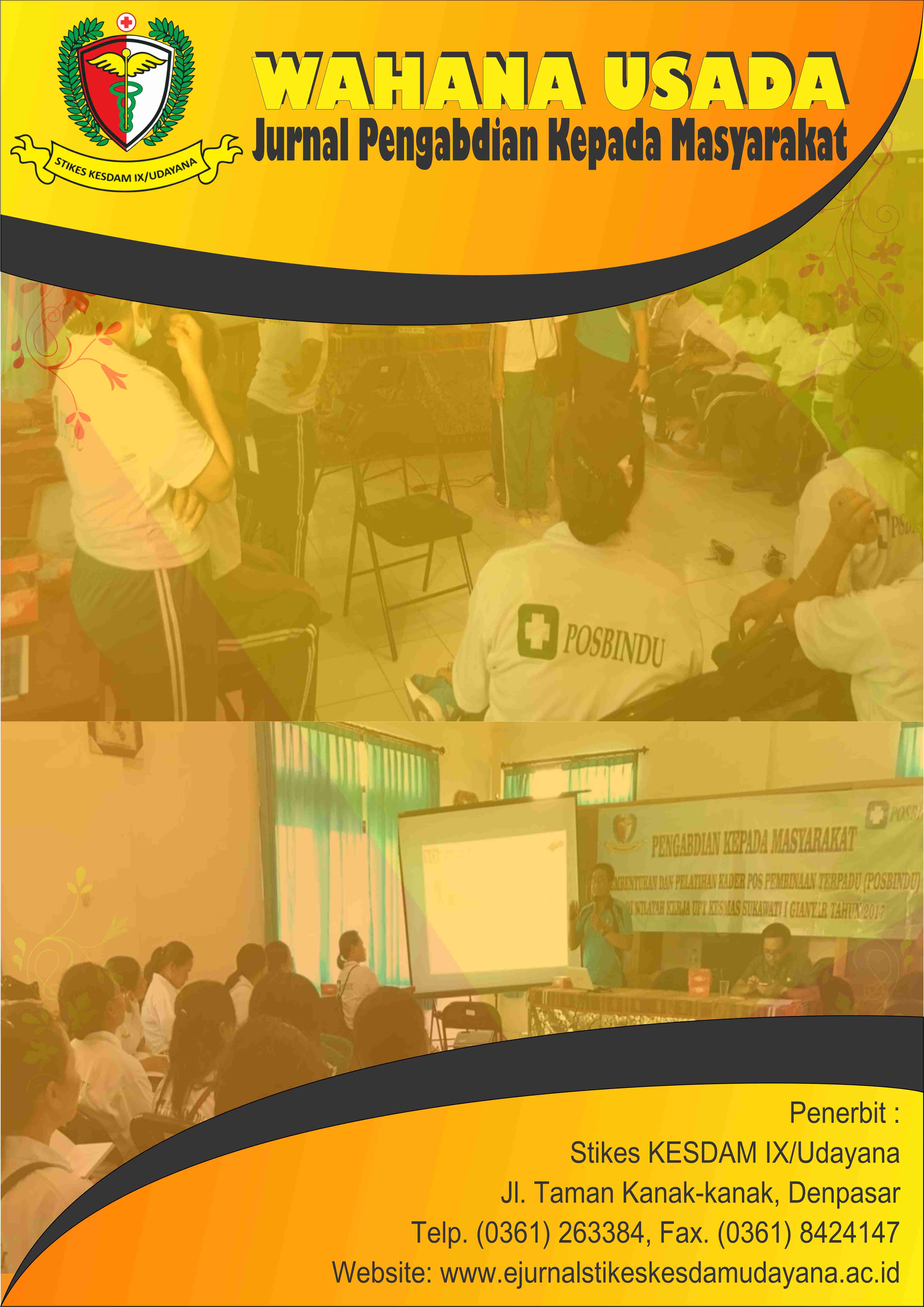Penyuluhan Gerakan 3M Plus dalam Upaya Pencegahan Demam Berdarah Dengue (DBD) pada siswa-siswi SDN 2 Denbatas
DOI:
https://doi.org/10.47859/wuj.v6i2.476Keywords:
children, dengue haemorrhagic fever, health promotionAbstract
Background: Tabanan Regency in Bali Province has a DHF incidence rate of 137.01 cases per 100,000 population, increase from 2022 to 2023, which was 80.82 cases per 100,000 population. Therefore, prevention efforts are needed to increase knowledge about the importance of DHF prevention. This health promotion aims to increase knowledge, understanding and behaviour of dengue prevention among primary school students. Methods: Health promotion activities were conducted offline on Monday, 6 May 2024. The target group of this activity were students in grades 4-6 of SDN 2 Denbantas. PowerPoint slides and posters were used to attract the interest of the extension participants. The evaluation of the results was carried out qualitatively (enthusiasm of the participants) and quantitatively (pre- and post-test results). Results: The health promotion activity was attended by 47 participants. Participants were very active in the question and answer session. Based on the identity data on the pre/post test sheets, most participants were in grade 6 (38%) and female (53%). A total of 37 participants (79%) showed an increase in score, 8 participants (17%) had a fixed score and a total of 2 participants (4%) showed a decrease in score on the post-test. Conclusion: There was an increase in participants' knowledge, as well as participants' enthusiasm and activity in listening to the counselling materials. In future health promotion activities, educational videos or other interactive media can be used to make more interesting and provide a deeper focus on the message so it can be conveyed more effectively.
References
Badan Pusat Statistik Provinsi Bali. (2023), “Jumlah Kasus Penyakit Menurut Jenis Penyakit Menurut Kabupaten/Kota di Provinsi Bali, 2019-2023”, available at: https://bali.bps.go.id/statictable/2018/04/11/69/jumlah-kasus-penyakit-menurut-jenis-penyakit-menurut-kabupaten-kota-di-provinsi-bali-2019-2021.html
CDC. (2024), Clinical Features of Dengue. Available at: https://www.cdc.gov/dengue/hcp/clinical-signs/index.html
Daruki, M.W. (2020). Case Report: Dengue Hemorrhagic Fever in Children. Review of Primary Care Practice and Education (Kajian Praktik dan Pendidikan Layanan Primer), 3(2), p.33. doi:https://doi.org/10.22146/rpcpe.57627.
Gubler DJ, et al. (2014), Dengue and Dengue Hemorrhagic Fever 2nd Edition. London: CAB International 2014. Available at: https://www.google.co.id/books/edition/Dengue_and_Dengue_Hemorrhagic_Fever_2nd/Tl_YBAAAQBAJ?hl=id&gbpv=1
Kartini, PR., dkk. (2017). Penyuluhan Kesehatan Rutin Puskesmas Untuk Mencegah Sekolah Dasar Dengan Kejadian DBD Ddi Kota Madiun Tahun 2017. Journal of Pharmaceutical Science and Medical Research, 1(1), p12-20.
Kemenkes RI (2017). Pedoman Pencegahan dan Pengendalian Demam Berdarah Dengue di Indonesia. Jakarta: Kemenkes RI
Kemenkes RI (2021). Data DBD Indonesia. Jakarta: Kemenkes RI
Lubis, F., Siregar, P. and Salamudin (2021). The Conditions Environmental Sanitation, 3M Behavior, and The House Index With The Event Of Dengue Dengue Fever (DHF). IAMSPH, 2(1).
Mulyaningrum, U. and Wardani, K. (2018). Clinical and Hematological Parameters as the Predictors of Shock in Dengue Infection. Global Medical & Health Communication (GMHC), 6(3). doi:https://doi.org/10.29313/gmhc.v6i3.3034.
Purwaningsih, P., dkk. (2024).Sosialisasi Pencegahan Demam Berdarah Dengue pada Anak Sekolah Dasar Dusun Setro Kecamatan Bergas Kabupaten Semarang. Aksi Nyata : Jurnal Pengabdian Sosial dan Kemanusiaan. 1(3). doi: https://doi.org/10.62383/aksinyata.v1i3.333
Sudha, E., Sangeetha, G. & Nammalwar, B.R. (2020), “Renal Injury in Dengue Viral Infections”, Pediatric Infectious Disease, Vol. 2 No. 1, pp. 6–11.
Umakanth, M. and Suganthan, N. (2020). Unusual Manifestations of Dengue Fever: A Review on Expanded Dengue Syndrome. Cureus, 12(9). doi:https://doi.org/10.7759/cureus.10678.
WHO. (2024). Dengue and Severe Dengue. Available at: https://www.who.int/news-room/fact-sheets/detail/dengue-and-severe-dengue

